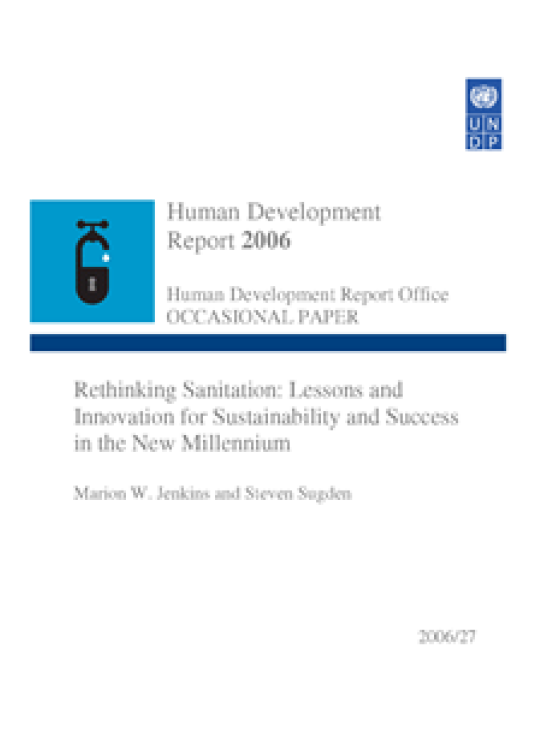Rethinking Sanitation: Lessons and Innovation for Sustainability and Success in the New Millennium

Download Report by Language
Document
jenkinsandsugden.pdf
(318.44 KB)
Citation
Jenkins, Marion W., Sugden, Steven. 2006. Rethinking Sanitation: Lessons and Innovation for Sustainability and Success in the New Millennium. New York.
Rethinking Sanitation: Lessons and Innovation for Sustainability and Success in the New Millennium
Posted on: January 01, 2006
Supply-led sanitation construction projects have for many decades been the standard approach used to address the lack of adequate sanitation among rural and urban households in developing countries. These typically were delivered through public provision by government or the donor community, using vertically isolated initiatives. A wellestablished pattern of poor progress of the supply-led model includes repeated failures to: generate demand for improved sanitation and behaviour change among project households, produce sanitation products and services that are sustainable beyond external support, or generate replication at scale This has stimulated a gradual and growing shift in thinking about the sanitation sector over the last decade (Cairncross 1992; LaFond 1995; Wright 1997; Unicef 1997; DFID 1998, WSSCC 1998; Fang 1999; Kalbermatten et al. 1999). When the Millennium Development Goal 10, Target 7 for sanitation was established in 2002, it raised international political stakes and generated real momentum for progress and new approaches to accelerate coverage (UN Millennium Project Task Force 2005). With much deeper attention and broadened interest in sanitation, a more realistic view of the complexity, time, resources and effort needed to meet the challenge of large-scale sustainable changes in sanitation at household level is now emerging. We review in this paper some of the key lessons learned from the past, new thinking emerging from consolidated learning and innovative experimentation on-the-ground (Table A-1 provides an overview and references for innovative strategies used in a variety of successful old and new sanitation projects and programmes), and some of the conditions necessary for success if real improvements in sanitation are to be achieved and sustained in rural and urban areas.

